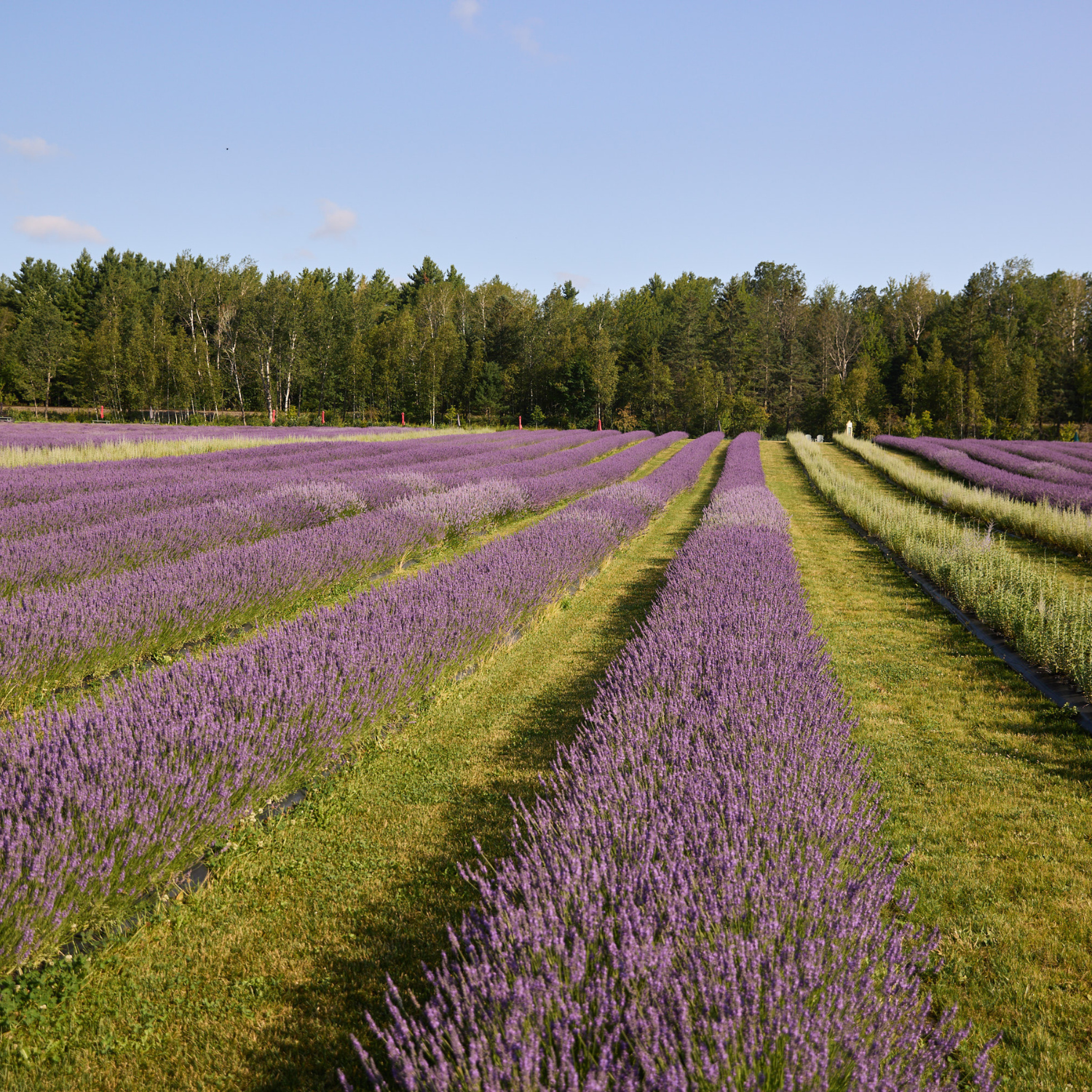Did visiting our lavender farm inspire you to add some lavender to your flower beds at home? Brilliant! They make a wonderful addition! Here are our best tricks and tips for growing lavender in your home garden.
What do you need to grow lavender?
You probably already have it!
Lavender thrives in full sun. Ensure it gets at least six hours of direct sun a day in a spot where the soil stays dry.
Lavender grows well in just about every type of soil. The trick is to make small mounds for them. This ensures good drainage because their roots need to stay dry. Lavender really doesn’t like having wet feet!
What’s the best variety?
Two types of lavender do well in Québec’s climate: Lavandula Angustifolia (true lavender, English lavender), sometimes called Munstead lavender, and lavandin, often called lavender Grosso. Munstead lavender features some of the very best virtues sought out for aromatherapy. You can purchase Munstead and lavandin lavender from Bleu Lavande and we also carry Afghan lavender, often called Russian Sage.
Caring for Lavender
Lavender needs very little care during the summer.
When first planting your lavender seedlings, make sure you give them ample water. This helps them build the root system they need. After that, you can let Mother Nature do the rest.
After the flowering season and once the flowers have dried, use scissors to trim back the plant into a rounded shape and ensure you cut all the flower stems. The general rule is to trim over a third of the plant, from the flower stems right down to the foliage. Do this no later than mid-September to give the plant a chance to heal before the cold. Make sure you disinfect the scissors before you trim your lavender to help avoid bacterial or other disease that can harm your lavender plants.
Creative Companion Planting
Lavandula Angostifolia produces beautifully bright purple flowers. It pairs nicely with other flowers that like full sun and dry, well-drained soil. Remember that undesirable insects dislike the smell of lavender making it a great companion plant for roses which are all too often attacked by pests.
We recommend leaving a 60 cm (24 inch) space around your lavender plants. This will give them the room they need to grow fully. If you decide to use a number of plants together to make a lavender bush, ensure you leave this same distance between each plant.
Optimally, avoid planting them near perennials and annuals whose size will overshadow them and invade their space. Otherwise, your lavender will not have the room to grow fully and will produce fewer flowers.
Preparing for Winter
Snow offers excellent insulating properties, but winter in Québec can be unpredictable so we recommend covering your lavender for the winter. Make sure they are entirely covered and fully protected for the entire winter season. Don’t use Styrofoam containers as this will suffocate them. Lavender does not take well to big changes in temperature, so you can safely keep them covered up until Mother’s Day!





3 comments
Manon côté
Serais intéressé de savoir où vous êtes situer et le prix pour chaque plants ? Merci
Serais intéressé de savoir où vous êtes situer et le prix pour chaque plants ? Merci
Patrick Rothlisberger
Je voudrais acheter une soixantaine de plant de lavandes.
Pouvez vous me donner vos tarifs ?
Dans l’attente de vous lire
Salutations
Je voudrais acheter une soixantaine de plant de lavandes.
Pouvez vous me donner vos tarifs ?
Dans l’attente de vous lire
Salutations
Malenfant
Je passe avec ma fille vous voir entre le 1 et le 2 aout. SVP nous réserver 2 plants de lavande
Nadia Malenfant et Gloria Brousseau
Je passe avec ma fille vous voir entre le 1 et le 2 aout. SVP nous réserver 2 plants de lavande
Nadia Malenfant et Gloria Brousseau